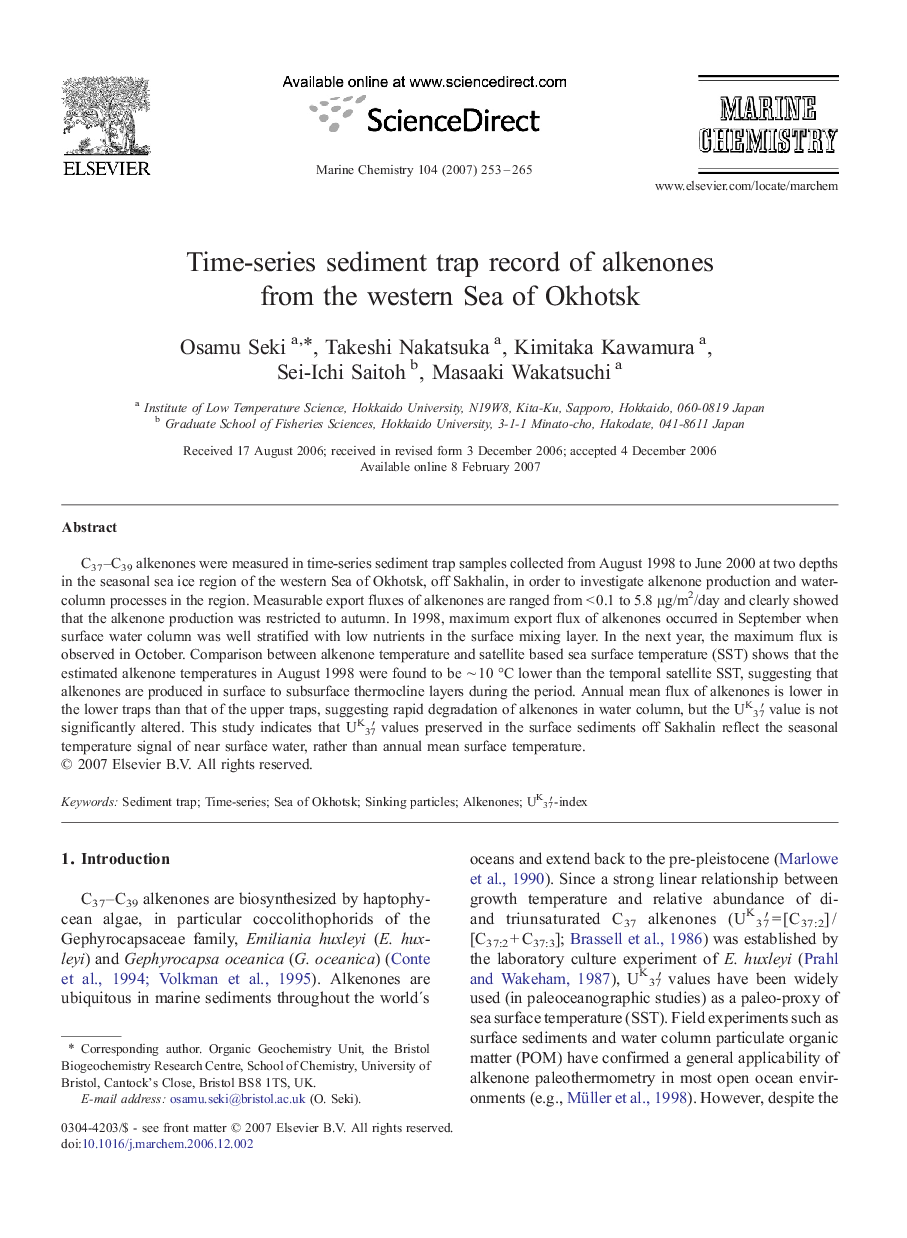| Article ID | Journal | Published Year | Pages | File Type |
|---|---|---|---|---|
| 1263306 | Marine Chemistry | 2007 | 13 Pages |
C37–C39 alkenones were measured in time-series sediment trap samples collected from August 1998 to June 2000 at two depths in the seasonal sea ice region of the western Sea of Okhotsk, off Sakhalin, in order to investigate alkenone production and water-column processes in the region. Measurable export fluxes of alkenones are ranged from < 0.1 to 5.8 μg/m2/day and clearly showed that the alkenone production was restricted to autumn. In 1998, maximum export flux of alkenones occurred in September when surface water column was well stratified with low nutrients in the surface mixing layer. In the next year, the maximum flux is observed in October. Comparison between alkenone temperature and satellite based sea surface temperature (SST) shows that the estimated alkenone temperatures in August 1998 were found to be ∼ 10 °C lower than the temporal satellite SST, suggesting that alkenones are produced in surface to subsurface thermocline layers during the period. Annual mean flux of alkenones is lower in the lower traps than that of the upper traps, suggesting rapid degradation of alkenones in water column, but the UK37′ value is not significantly altered. This study indicates that UK37′ values preserved in the surface sediments off Sakhalin reflect the seasonal temperature signal of near surface water, rather than annual mean surface temperature.
